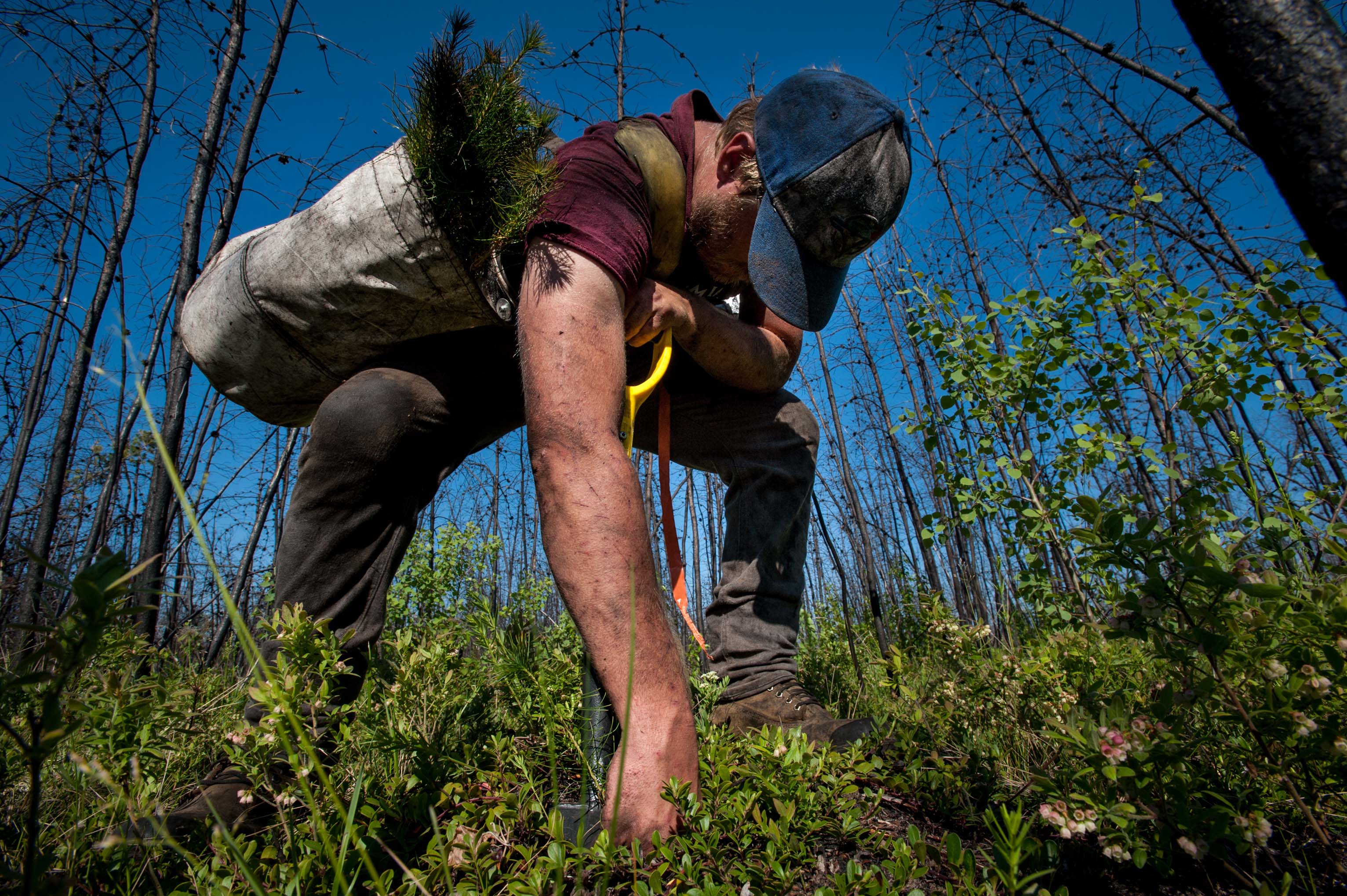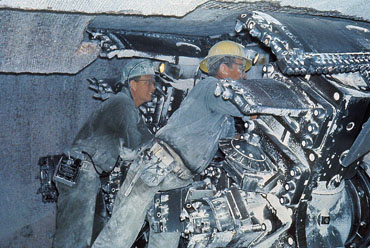Browse "Natural resources"
-
Article
Natural Resources in Saskatchewan
Canada is a resource rich country with different natural resources found across the provinces and territories. Saskatchewan’s natural resources include agricultural land, forests, minerals, oil, fish and wildlife. Natural resources contribute towards the economies of Saskatchewan and Canada.
"https://d2ttikhf7xbzbs.cloudfront.net/media/new_article_images/NaturalResources/Saskatchewan_wheat_fields.jpg" // resources/views/front/categories/view.blade.php
https://d2ttikhf7xbzbs.cloudfront.net/media/new_article_images/NaturalResources/Saskatchewan_wheat_fields.jpg
-
Article
Natural Resources in the Atlantic Provinces
The Atlantic provinces include Nova Scotia, New Brunswick, Prince Edward Island and Newfoundland and Labrador. The natural resources of the Atlantic provinces include fish and crustaceans, forests, water, minerals, fossil fuels and agricultural land.
"https://d2ttikhf7xbzbs.cloudfront.net/media/media/2280041c-0f68-4bff-b9af-57d165727396.jpg" // resources/views/front/categories/view.blade.php
https://d2ttikhf7xbzbs.cloudfront.net/media/media/2280041c-0f68-4bff-b9af-57d165727396.jpg
-
Article
Natural Resources in the Territories
The natural resources of Yukon, the Northwest Territories and Nunavut include wildlife, freshwater, minerals, oil and gas. Yukon and the Northwest territories also have vast forests. Through sustainable management, these resources can drive economic growth in the North. (See also Sustainability in Canada; Economy.)
"https://d2ttikhf7xbzbs.cloudfront.net/media/media/b0be7080-64dd-42a1-b455-dcf920df8bfa.jpg" // resources/views/front/categories/view.blade.php
https://d2ttikhf7xbzbs.cloudfront.net/media/media/b0be7080-64dd-42a1-b455-dcf920df8bfa.jpg
-
Article
Northern Gateway Pipeline Proposal
The $7.9 billion Northern Gateway project was a pipeline proposal that Enbridge put forward in 2008. Northern Gateway would have carried diluted bitumen (“dilbit”) about 1,170 km from Bruderheim, Alberta to a terminal on the Pacific Ocean at Kitimat, British Columbia. Enbridge claimed that the project would create $1.2 billion in tax revenue for BC, as well as 560 jobs. The Federal Court of Appeal overturned the pipeline’s approval in 2016. That same year, the Liberal government of Prime Minister Justin Trudeau rejected the project.
"https://d2ttikhf7xbzbs.cloudfront.net/media/media/de50644a-0b88-4e0a-991b-a6c9222e3c29.jpg" // resources/views/front/categories/view.blade.php
https://d2ttikhf7xbzbs.cloudfront.net/media/media/de50644a-0b88-4e0a-991b-a6c9222e3c29.jpg
-
Editorial
Not for Saps: Tree Planting in Alberta
Over a century’s worth of shifting environmental policy means that today, maintaining Canada’s forests is as important as cutting them down. Tree planting is an essential part of this maintenance, and each year thousands of young Canadians trek through rough conditions and remote areas to replant thousands of trees.
"https://d2ttikhf7xbzbs.cloudfront.net/media/media/3f6e30bf-0cc6-47cd-8961-1918b0dae744.jpg" // resources/views/front/categories/view.blade.php
https://d2ttikhf7xbzbs.cloudfront.net/media/media/3f6e30bf-0cc6-47cd-8961-1918b0dae744.jpg
-
Article
Peat
Peat, living and partially decomposed organic matter, consists principally of decayed brown mosses, Sphagnum plants, sedges and other semiaquatic plant remains.
"https://development.thecanadianencyclopedia.ca/images/tce_placeholder.jpg?v=e9dca980c9bdb3aa11e832e7ea94f5d9" // resources/views/front/categories/view.blade.php
https://development.thecanadianencyclopedia.ca/images/tce_placeholder.jpg?v=e9dca980c9bdb3aa11e832e7ea94f5d9
-
Article
Potash
Potash is an alkaline potassium compound most commonly used in fertilizers. It refers to a variety of salts produced through mining of minerals and chemical manufacturing. Canada is the world's largest potash producer and exporter (see Exports from Canada). The country’s potash industry is located in Saskatchewan.
"https://d2ttikhf7xbzbs.cloudfront.net/media/media/cd668309-705d-44b0-a404-7a6c5242db9b.jpg" // resources/views/front/categories/view.blade.php
https://d2ttikhf7xbzbs.cloudfront.net/media/media/cd668309-705d-44b0-a404-7a6c5242db9b.jpg
-
Article
Reforestation
Many people believe a new sapling must be planted to replace every tree that is harvested. In fact, the FOREST regenerates naturally. After logging, young shoots grow and develop quickly because they have more room and good exposure to sunlight.
"https://development.thecanadianencyclopedia.ca/images/tce_placeholder.jpg?v=e9dca980c9bdb3aa11e832e7ea94f5d9" // resources/views/front/categories/view.blade.php
https://development.thecanadianencyclopedia.ca/images/tce_placeholder.jpg?v=e9dca980c9bdb3aa11e832e7ea94f5d9
-
Article
Resource Management
Resource management usually refers to the responsibility of governments to ensure that natural resources under their jurisdiction are used wisely or conserved.
"https://development.thecanadianencyclopedia.ca/images/tce_placeholder.jpg?v=e9dca980c9bdb3aa11e832e7ea94f5d9" // resources/views/front/categories/view.blade.php
https://development.thecanadianencyclopedia.ca/images/tce_placeholder.jpg?v=e9dca980c9bdb3aa11e832e7ea94f5d9
-
Article
Resource Rights
Natural-resource development has played a major role in Canada's economy and continues to be a focus of national concerns.
"https://d2ttikhf7xbzbs.cloudfront.net/media/media/b714baa3-b8d8-4657-a436-7f27a8b1c819.jpg" // resources/views/front/categories/view.blade.php
https://d2ttikhf7xbzbs.cloudfront.net/media/media/b714baa3-b8d8-4657-a436-7f27a8b1c819.jpg
-
Article
Resource Towns in Canada
Resource towns are small, isolated communities built around resource-based industries and transportation. They include mining towns, mill towns, railway towns and fishing villages. Resource development has long been a key factor in shaping the settlement and growth of communities. Some scholars have argued that all Canadian urban growth depends on the production of natural resources. (See also Staple Thesis.) Resource towns have been important agents in this production process. Because they depend on single industries, the economies of resource towns are often unstable.
"https://d2ttikhf7xbzbs.cloudfront.net/media/media/6883bca4-5691-4945-9140-c40b894294ea.jpg" // resources/views/front/categories/view.blade.php
https://d2ttikhf7xbzbs.cloudfront.net/media/media/6883bca4-5691-4945-9140-c40b894294ea.jpg
-
Article
Resource Use
Since prehistoric times, the inhabitants of what is now Canada used vegetation and animals for food, clothing and shelter. They fashioned implements and ornaments from MINERALS and, after the arrival of Europeans, used furs for trading.
"https://development.thecanadianencyclopedia.ca/images/tce_placeholder.jpg?v=e9dca980c9bdb3aa11e832e7ea94f5d9" // resources/views/front/categories/view.blade.php
https://development.thecanadianencyclopedia.ca/images/tce_placeholder.jpg?v=e9dca980c9bdb3aa11e832e7ea94f5d9
-
Article
Natural Resources in Canada
Natural resources are aspects of the natural environment from which goods and services can be obtained and produced. They include air, sunlight, water, land, vegetation, animal life and geological resources. People can also value natural resources for their own sake or for their aesthetic qualities. Humans must manage natural resources to sustain the benefits they offer. Canada is among the most resource-rich countries in the world. Its large and varied natural resources are essential to its economies and cultures. But there are ongoing debates about how to use, share and manage natural resources. Click here for definitions of key terms used in this article. This is the full-length entry about natural resources in Canada. For a plain-language summary, please see Natural Resources in Canada (Plain-Language Summary).
"https://d2ttikhf7xbzbs.cloudfront.net/media/media/b714baa3-b8d8-4657-a436-7f27a8b1c819.jpg" // resources/views/front/categories/view.blade.php
https://d2ttikhf7xbzbs.cloudfront.net/media/media/b714baa3-b8d8-4657-a436-7f27a8b1c819.jpg
-
Article
Scotian Shelf
Scotian Shelf, a 700 km section of the Continental Shelf off Nova Scotia. Bounded by the Laurentian Channel on the NE, and Northeast Channel and the Gulf of Maine on the SW, it varies in width from 120 to 240 km; the average depth is 90 m.
"https://development.thecanadianencyclopedia.ca/images/tce_placeholder.jpg?v=e9dca980c9bdb3aa11e832e7ea94f5d9" // resources/views/front/categories/view.blade.php
https://development.thecanadianencyclopedia.ca/images/tce_placeholder.jpg?v=e9dca980c9bdb3aa11e832e7ea94f5d9
-
Article
Silviculture
Silviculture is the branch of FORESTRY that deals with establishing, caring for and reproducing stands of trees for a variety of forest uses including wildlife habitat, timber production and outdoor recreation.
"https://development.thecanadianencyclopedia.ca/images/tce_placeholder.jpg?v=e9dca980c9bdb3aa11e832e7ea94f5d9" // resources/views/front/categories/view.blade.php
https://development.thecanadianencyclopedia.ca/images/tce_placeholder.jpg?v=e9dca980c9bdb3aa11e832e7ea94f5d9
